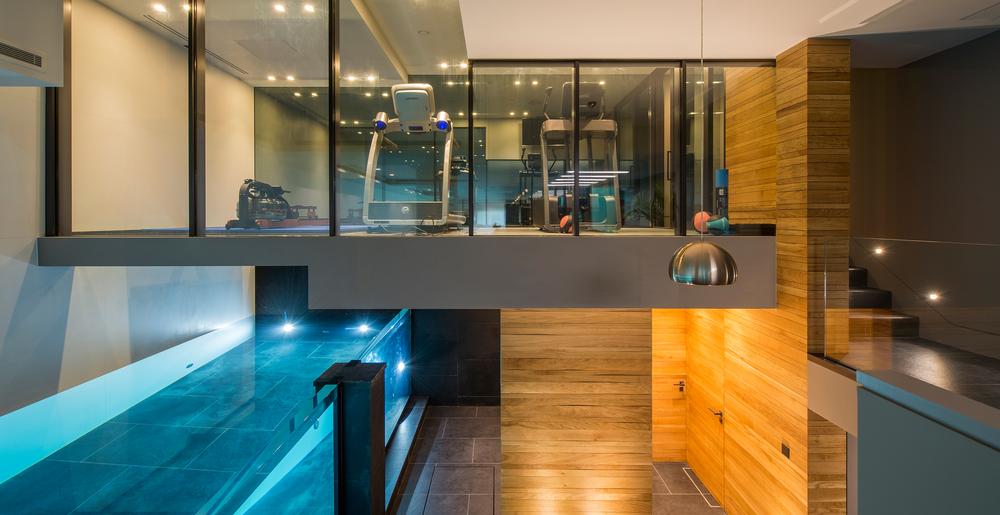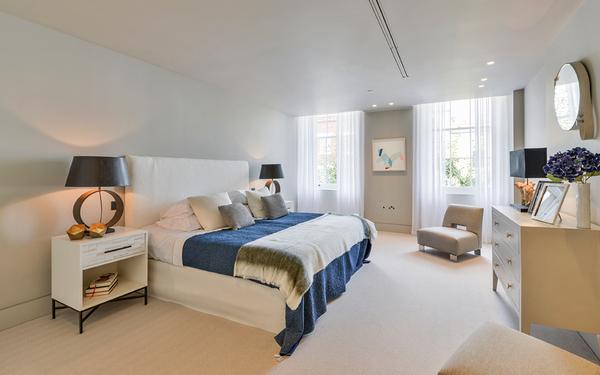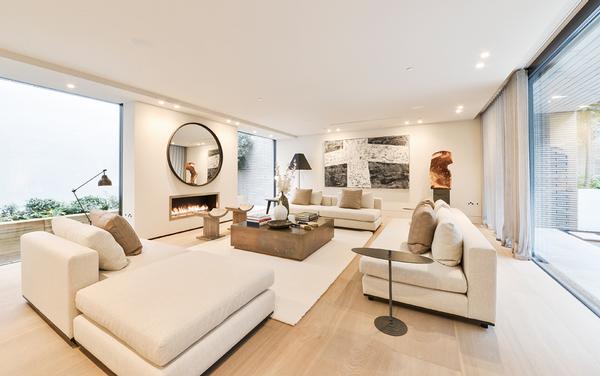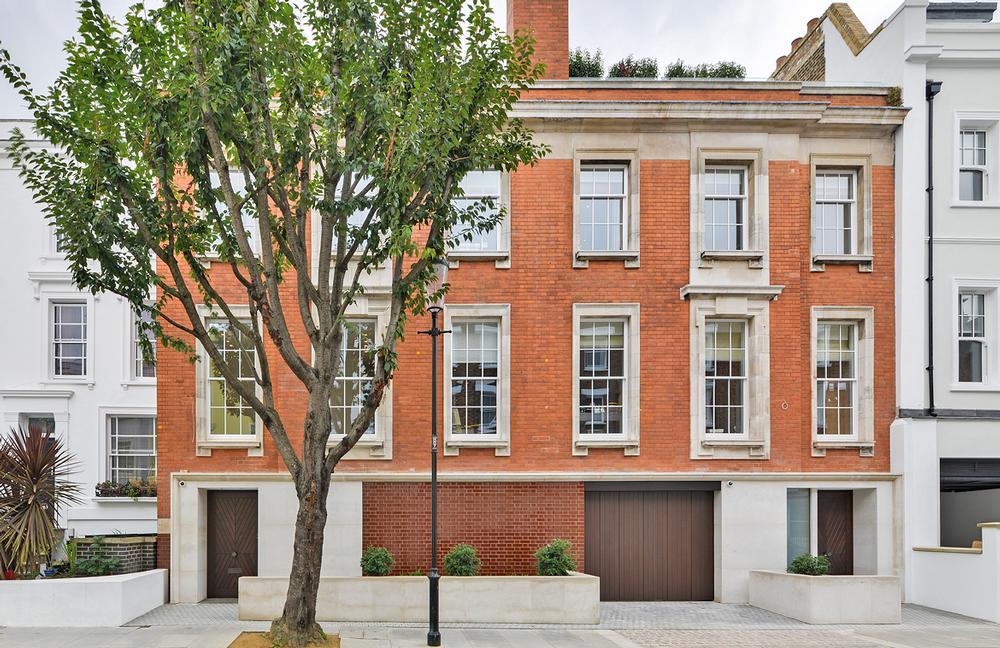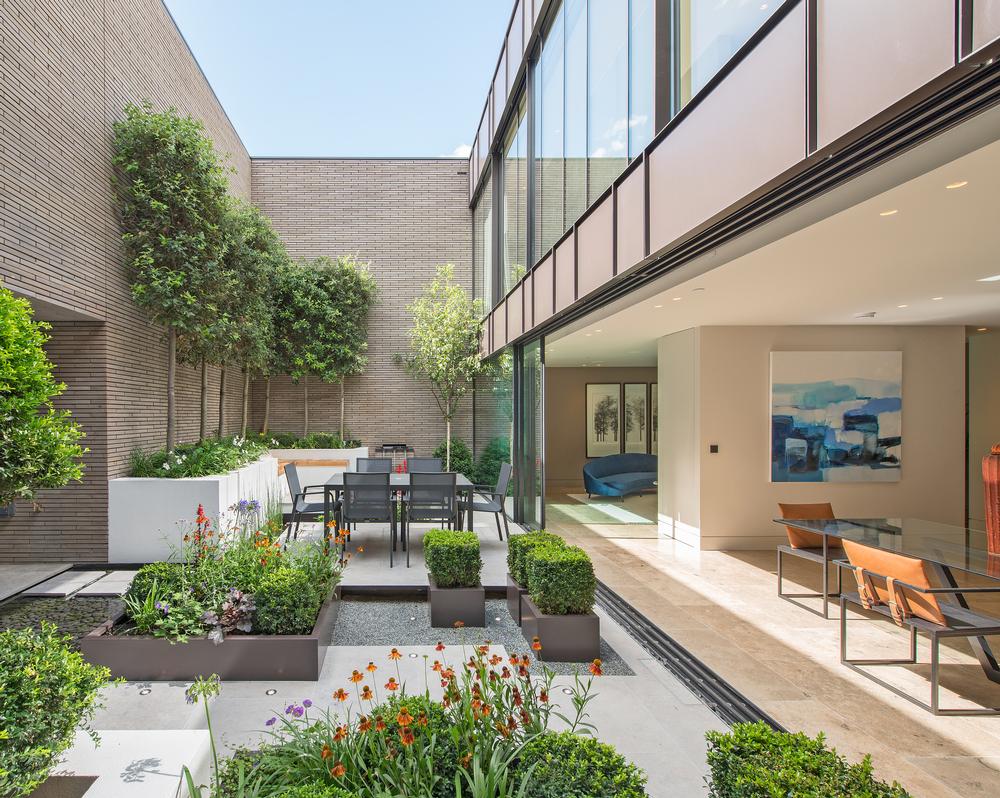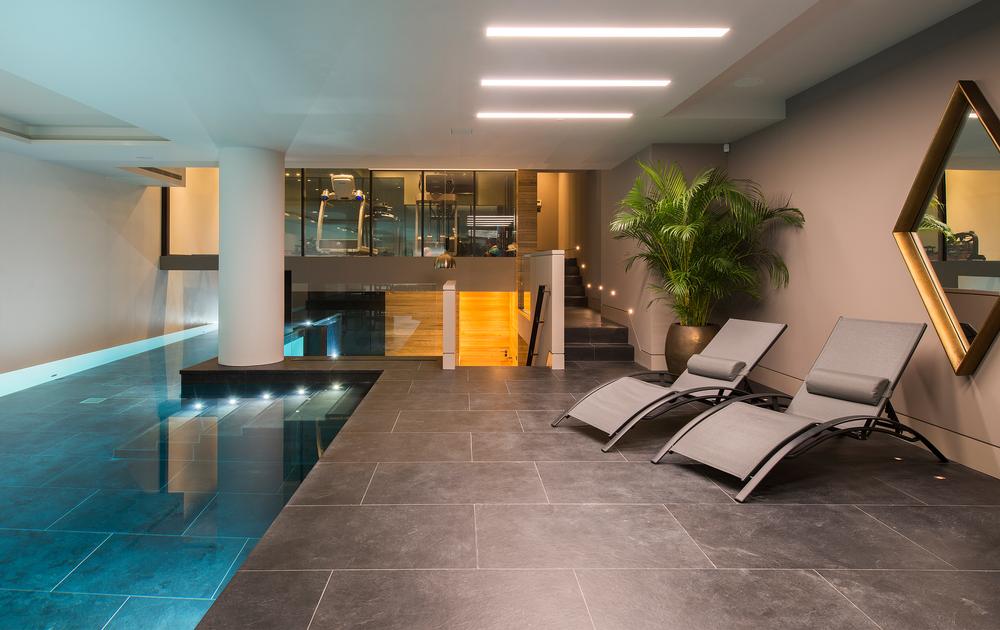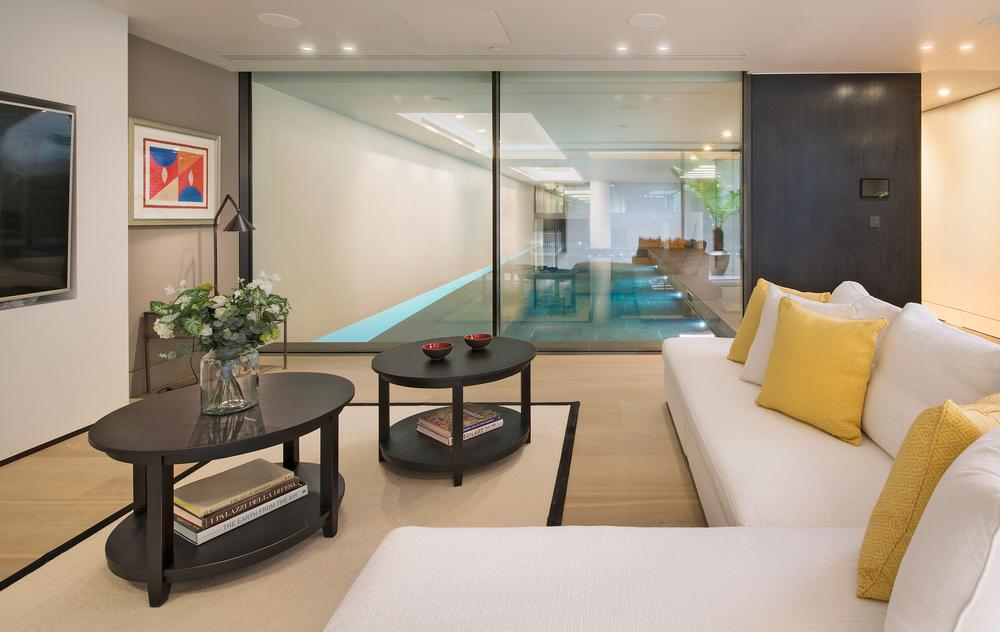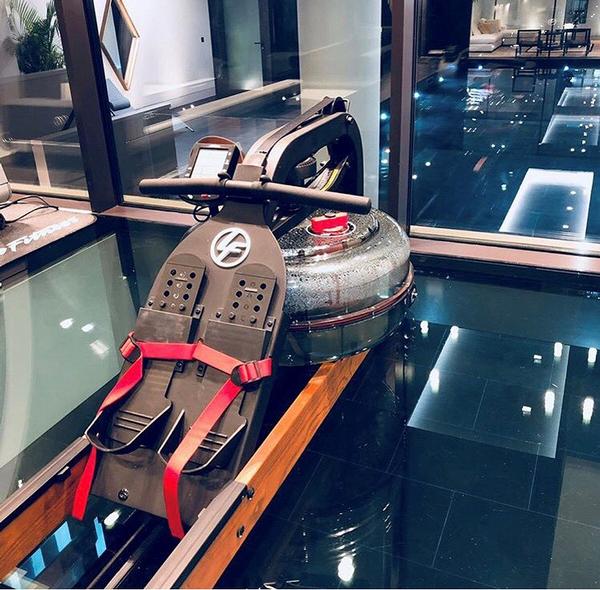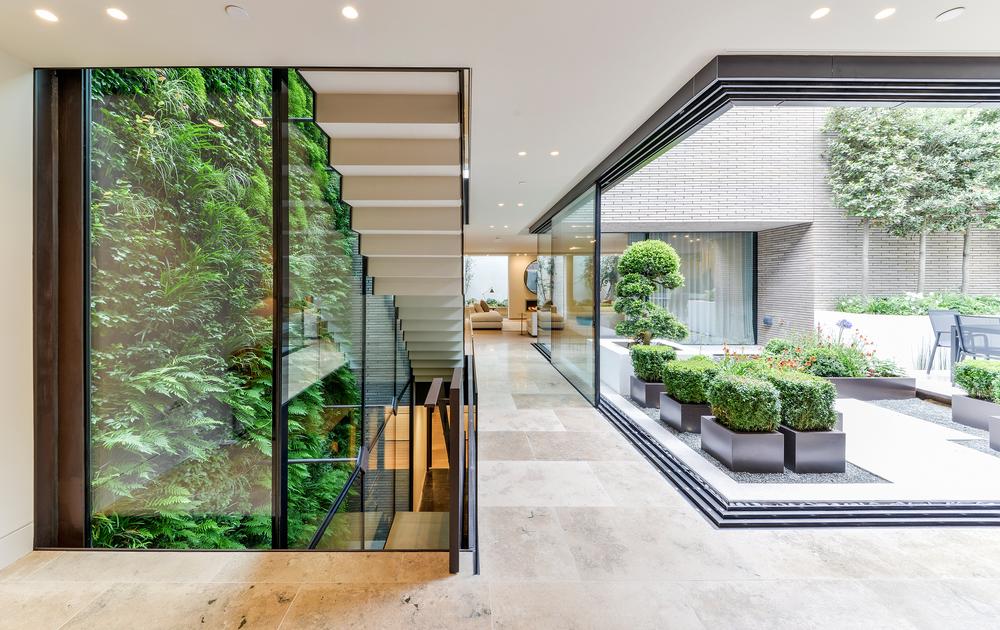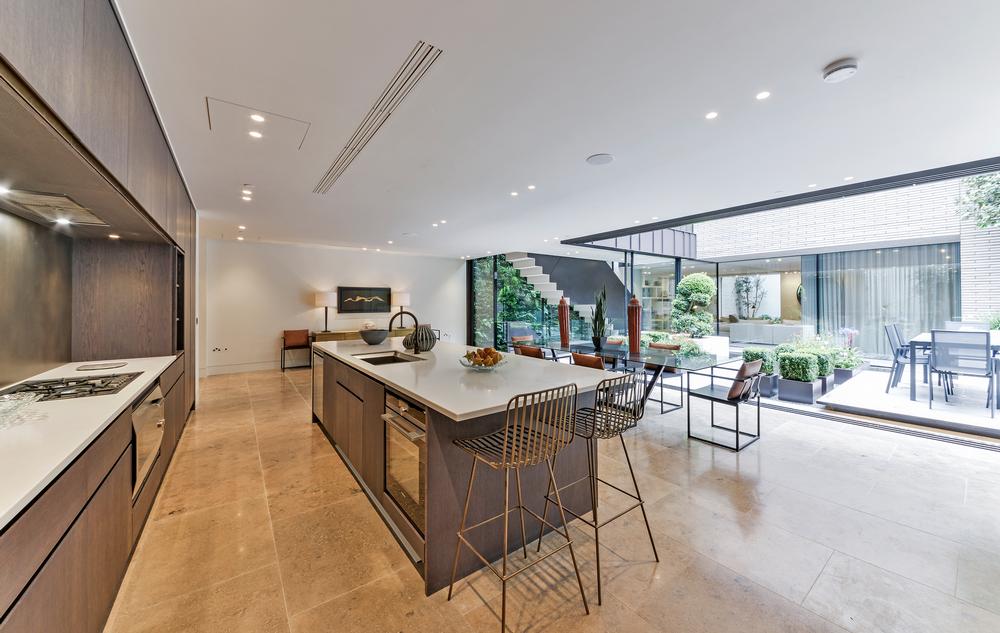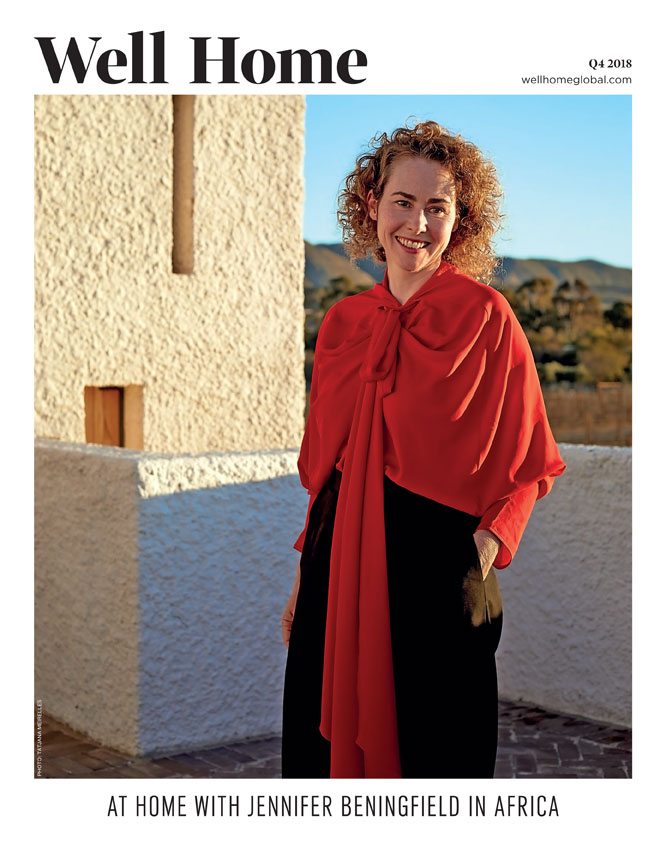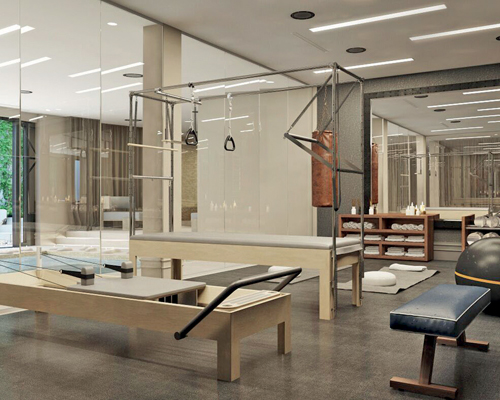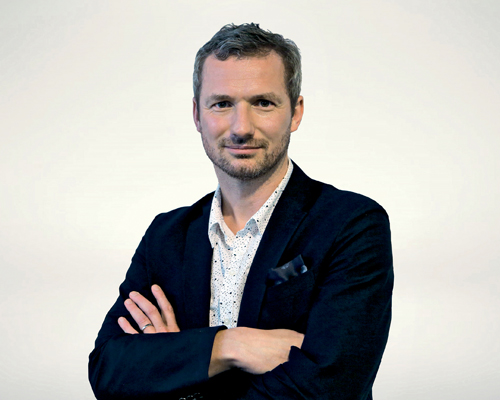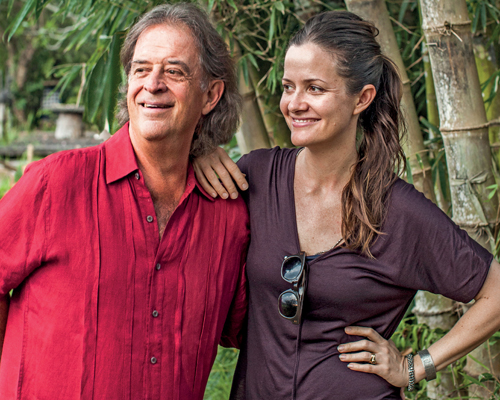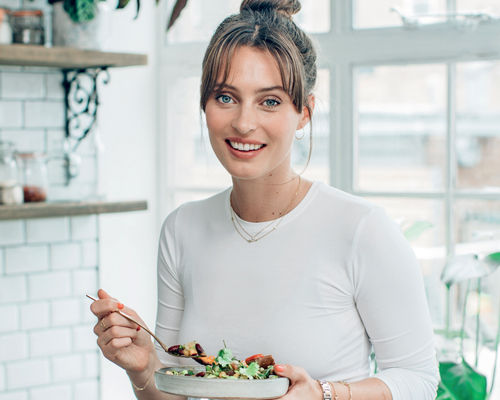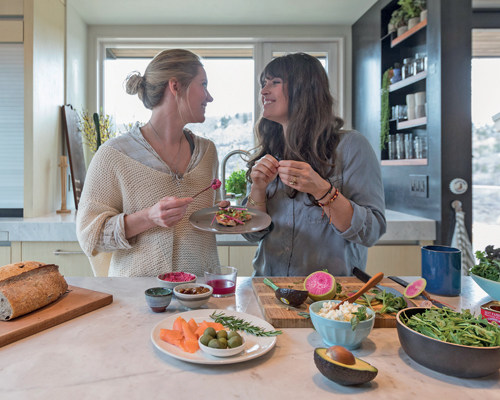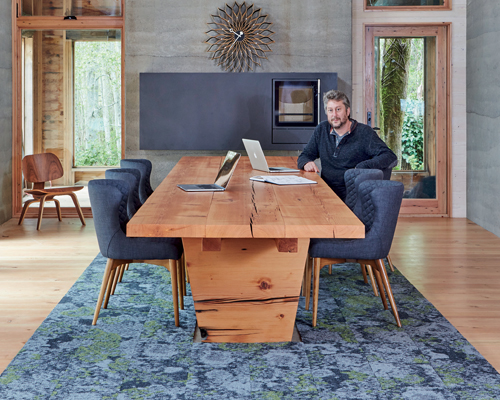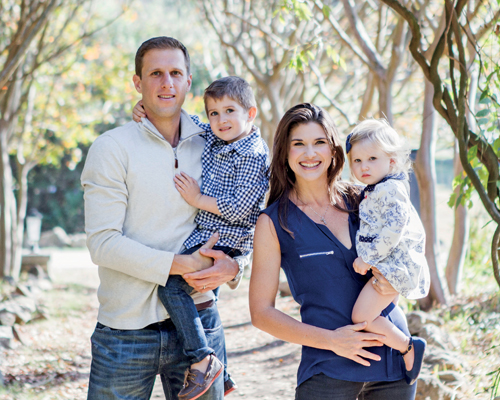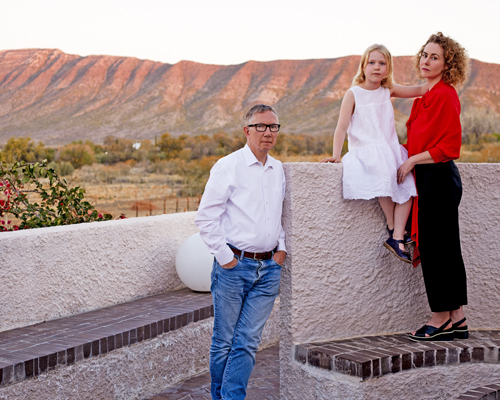The city of London is no stranger to super-homes and in a competitive housing market, those at the centre of premium property development continue to seek new ways in which to differentiate the buildings they’re marketing to high-end buyers.
Tucked away in the heart of London’s Notting Hill, the Hidden House was designed by TF Architecture, with construction work by Kenham Building.
Sold privately in 2017, the five-bed home offers 9,000sq ft (836sq m) of living space across three floors and – tapping into an increasingly popular trend – its wellness offering is a central feature of this remarkable property.
A wellness hub in the heart of the home
Ranged around a large central courtyard with indoor/outdoor living, the property has extensive family and entertaining spaces and an abundance of plantings and gardens, creating a tranquil oasis in this busy part of London.
Substantial living walls and large light-wells continue the green theme, bringing daylight, oxygen and nature’s abundance into the heart of the home and helping to moderate the temperature and humidity.
One of the outstanding areas of the Hidden House is the property’s basement level, which is home to a swimming pool and a gym with shower and changing facilities, as well as a media centre, family social space and wine store.
At 20 metres, the pool is one of the longest in a private home in London, yet its original design looked somewhat different, with the proposed pool being far smaller and the space adjacent to it being taken up by a relaxation area.
The decision was made to remove the relaxation area from the plan and instead to allocate this floor area to building a bigger pool to deliver a more conventional swimming space which was clear of distractions and obstructions, as Kenham’s Joshua Schumann explains: “Although the pool was originally much smaller, in the end, less of a focus was put on creating a pool for play or leisure, and more on designing an area which supports a healthy, active lifestyle.”
The gym is positioned at the back of the pool area and has a glass floor and walls, allowing for uninterrupted views. With all this glass, it appears to float above the pool below.
The basement’s configuration is in tune with the masterplan for the entire property, which been planned to create a seamless flow and uncomplicated simplicity.
Training choices
The gym equipment, which was originally loaned to showcase the health and wellness offering to prospective buyers before being sold as part of the house purchase, was supplied by Life Fitness, a regular collaborator of Kenham.
The gym – with a budget of £400,000 – was designed with a focus on cardiovascular exercise, with a matted area added for bodyweight training and stretching.
With space available for three machines, careful consideration had to be put into the equipment selection; not only to maximise workout options, but to also ensure that the chosen equipment was aligned with the modern design of the training area to avoid it looking cluttered.
“The requirements for a home gym are often dictated by available space,” explains Chris Webb from Life Fitness UK, “but in this instance, a great deal of thought also went into the aesthetics of the equipment, to ensure the gym fitted with the modern styling of the house, without compromising on quality or the range of exercise options on offer.”
“It was also essential that each piece was accessible and able to support the training needs of any user, to ensure the gym could cater for a wide range of abilities, so that it could be used by everyone in the family and also guests and relatives who might want to use the space,” adds Chris.
The kit selected
The first choice made was for the Life Fitness T5 Treadmill and Track Connect Console, which offers three different running surface settings, as well as walk, jog and run speeds and up to four user profiles for personalised workouts.
Secondly, the Life Fitness FS4 Elliptical was picked for its three-in-one exercise offering within a compact footprint.
A cross trainer – the FS4 –has attachment points for the use of resistance bands to increase the number of workout options available, plus platforms on each side to facilitate upper body workouts. Its touchscreen console also interacts with popular fitness apps and wearables, while users can access new workout uploads on screen, via the console’s wireless internet connection.
The Row HX Trainer completes the gym’s equipment range. Manufactured from natural wood and tempered steel, the Row HX utilises fluid technology resistance, to create a low-impact, total-body workout which is suitable for a wide range of users. Its small footprint and ability to be moved and stored with ease made it a suitable choice, while exercising on a water rower on a glass floor over water was a fun touch.
Setting up your own gym
“Every gym is unique and needs to cater for the specific needs of the owner and yet when it comes to designing any training space, the practical challenges faced are often very similar,” says Joshua Schumann.
“When setting up your home gym, think of the areas that you like to train in most – if you’re a cyclist, you might want to do more leg work, or invest in a great bike, for example. It’s better to spend more money on one high-spec piece of equipment that you love and will use every day, than going for more volume and buying two machines which take up more space and may not get as much use.
“A flexible design and layout is also important: Ideally home gyms will be designed so you can switch the gym around should you choose to. Think about things like access to electric sockets, lighting and safety in terms of cables and clearance on machines and also how adaptable the equipment will be to a different layout if you get bored.
“It sounds simple, but it’s all about ensuring the space as a whole delivers on its requirements and offers you a comfortable and engaging place in which to train.”



